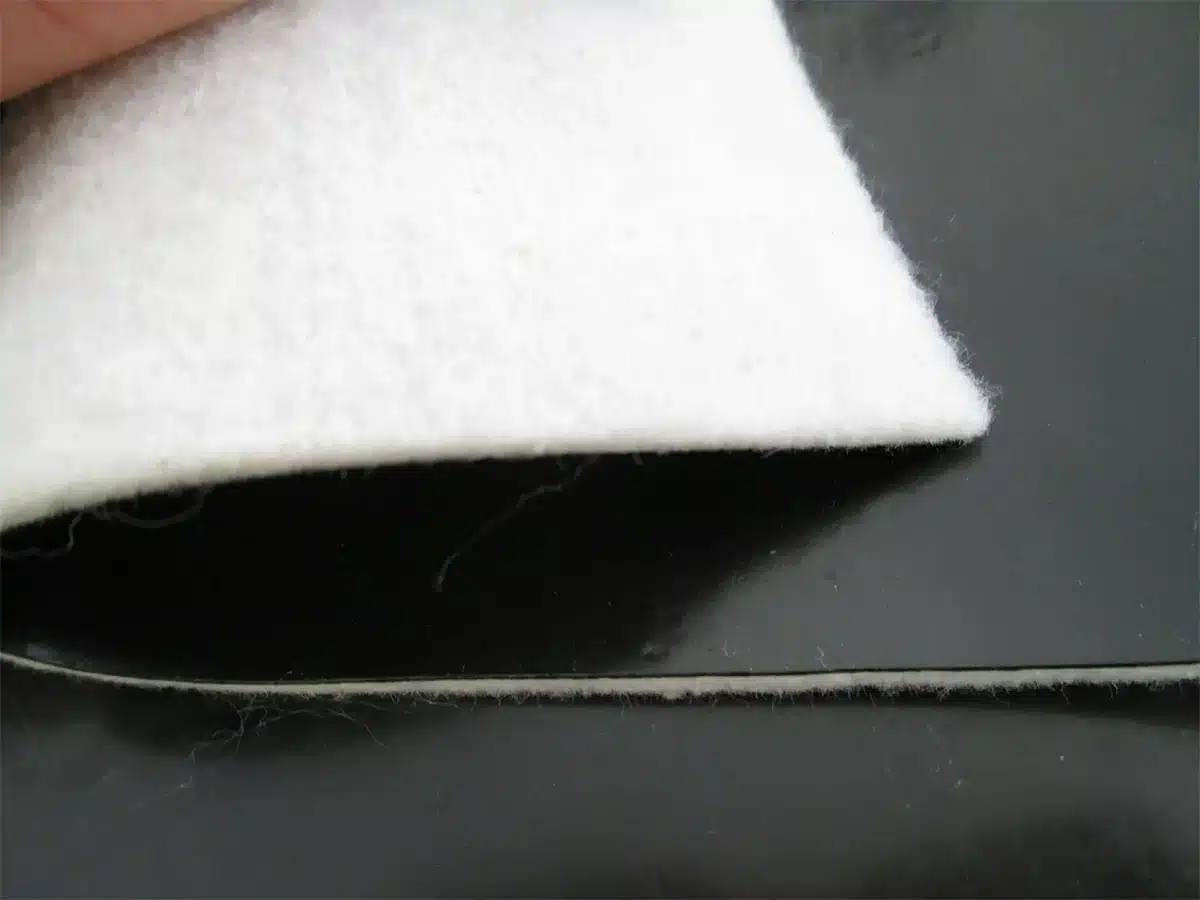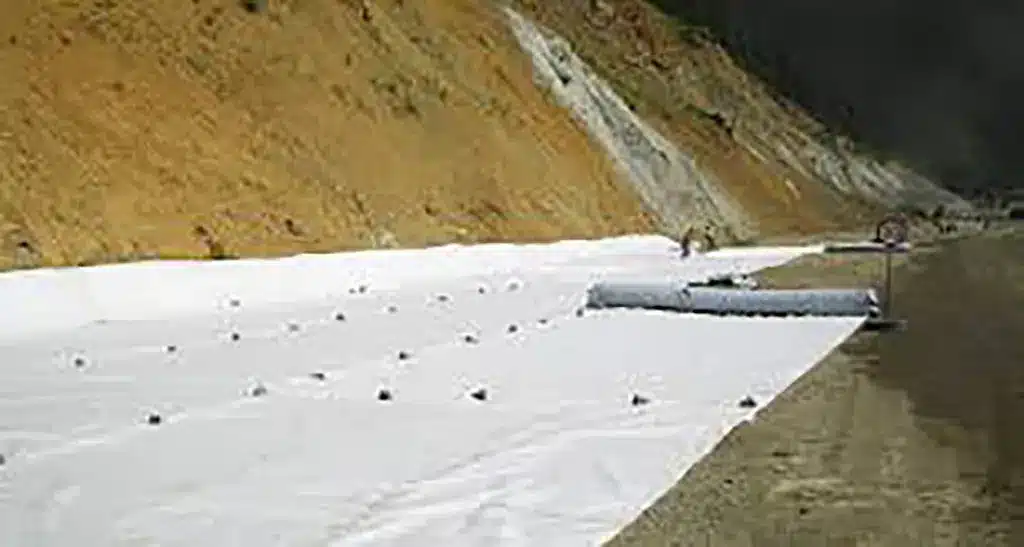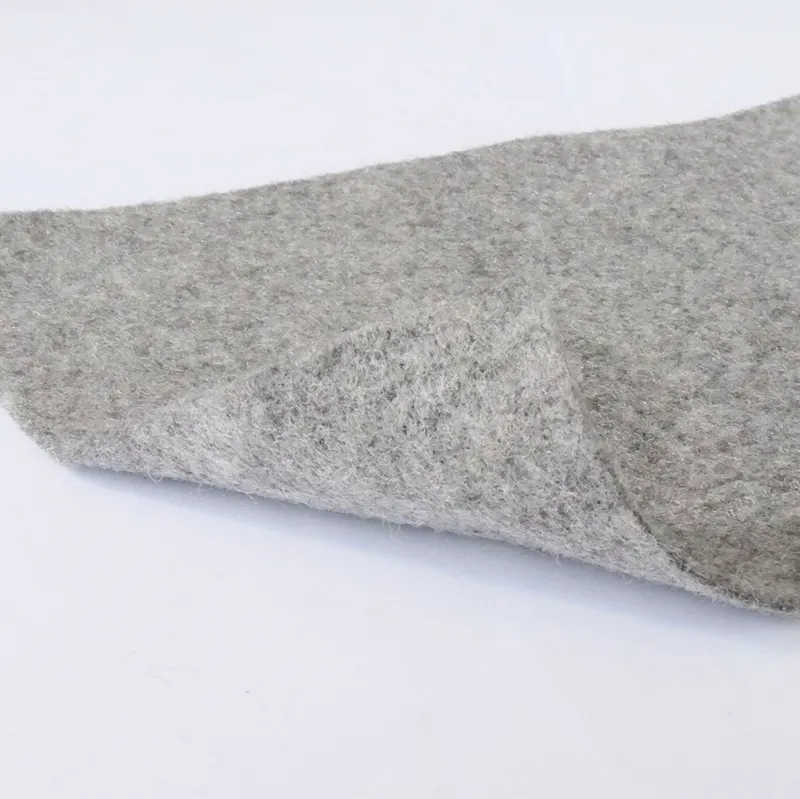+86-159 9860 6917
info@geofantex.com
geofantex@gmail.com
+86-400-8266163-44899
Non-woven geotextile fabric for pavers is an essential component in modern construction and landscaping projects. This versatile material provides stability, prevents soil erosion, and enhances the longevity of pavers. In this article, we’ll explore the requirements for using non-woven geotextile fabric to help you better understand its applications and benefits.

What is the role of non-woven geotextile fabric in paver projects?
Non-woven geotextile fabric serves several key functions:
| Separation | One of its primary roles is to act as a barrier between the subsoil and the base material used for the paver installation. By preventing the two from mixing, the geotextile fabric ensures that the base material remains stable and uniform. This separation minimizes settling and rutting, which can occur when subsoil infiltrates the base material. |
| Filtration | Non-woven geotextile fabric also functions as a filtration layer. It allows water to pass through while blocking the passage of fine soil particles. This filtration prevents clogging and maintains efficient drainage, ensuring that water does not accumulate beneath the pavers, which can lead to issues like erosion and heaving. |
| Reinforcement | The fabric reinforces the base layer of pavers by distributing loads more evenly across the surface. This reinforcement helps reduce the stress on the base material, thereby increasing the load-bearing capacity and preventing the formation of ruts or depressions over time. |
| Erosion Control | In outdoor projects, especially in areas prone to erosion, non-woven geotextile fabric can be instrumental in preventing soil erosion. By stabilizing the base material and promoting proper drainage, it mitigates the risk of erosion caused by water runoff. |
| Durability and Longevity | By facilitating the separation, filtration, and reinforcement of the paver base, non-woven geotextile fabric significantly extends the lifespan of the paver installation. It reduces the need for maintenance and repairs, making it a cost-effective and sustainable choice. |
What are the key factors to consider when choosing the right non-woven geotextile fabric for pavers?
When selecting non-woven geotextile fabric for pavers, it’s crucial to consider several specific factors to ensure you make the most suitable and effective choice. Here’s a detailed analysis of the key considerations:
- Project Requirements: Understand the specific needs of your project. Consider the type of soil, the level of drainage required, and the expected load on the pavers. This will help determine the strength and permeability needed in the geotextile fabric.
- Fabric Weight and Thickness: The weight (expressed in ounces per square yard) and thickness of the fabric affect its durability and filtration capabilities. Heavier and thicker fabrics generally offer better separation and reinforcement but may have lower permeability.
- Tensile Strength: This measures the fabric’s resistance to stretching or tearing under tension. Higher tensile strength is essential for areas that will bear heavy loads or experience high traffic.
- Permeability: The fabric’s ability to allow water to pass through while filtering out sediment is crucial for drainage and preventing soil erosion. Ensure the fabric’s permeability matches your project’s drainage requirements.
- Puncture Resistance: This indicates how well the fabric can withstand punctures from sharp objects, which is important for protecting the fabric during installation and its lifespan under the pavers.
- Environmental Considerations: Some geotextiles are made from recycled materials or are designed to be more eco-friendly. If environmental impact is a concern for your project, look for fabrics that meet these criteria.
- Longevity and UV Resistance: Consider the expected lifespan of the geotextile fabric and whether it will be exposed to sunlight. UV resistance is important for fabrics that will not be completely covered by soil or pavers.
- Compatibility with Soil and Aggregate Types: Ensure the fabric is suitable for the type of soil and aggregate in your project area. Some fabrics work better with certain soil types or aggregate sizes.
- Installation and Maintenance: Evaluate the ease of installation and any maintenance requirements. Some fabrics may be easier to cut and lay than others, affecting labor costs and project timelines.
- Cost: While not the only factor, the cost of the geotextile fabric should be considered in the context of the overall project budget and the benefits it offers in terms of durability, maintenance, and performance.
By carefully evaluating these factors, you can make an informed decision on the most appropriate non-woven geotextile fabric for your pavers, ensuring the longevity and success of your project.

Can non-woven geotextile fabric be used in various paver applications?
Yes, non-woven geotextile fabric can be used in various paver applications. Here are some common uses:
- Separation: Non-woven geotextile fabric is often placed between the subgrade and the aggregate base layer in paver installations. This helps prevent the mixing of the two layers, which can lead to uneven settling and reduced load-bearing capacity.
- Filtration: The fabric allows water to pass through while preventing soil particles from migrating into the aggregate base. This is particularly important in preventing clogging and maintaining proper drainage, which helps prolong the lifespan of the paver installation.
- Drainage: Non-woven geotextile fabric can help improve drainage in paver applications by facilitating the flow of water away from the paver surface. This prevents water accumulation and reduces the risk of frost heave and other water-related issues.
- Reinforcement: Although non-woven geotextiles are not as strong as woven geotextiles, they still provide some reinforcement by distributing loads and improving the overall stability of the paver installation.
- Weed Control: By acting as a barrier, non-woven geotextile fabric can help prevent the growth of weeds between pavers, reducing maintenance and keeping the paver surface looking clean.
In summary, non-woven geotextile fabric is a versatile material that can enhance the performance and longevity of paver installations by providing separation, filtration, drainage, reinforcement, and weed control.
What are the steps for installing non-woven geotextile fabric for pavers?
Installing non-woven geotextile fabric for pavers is a critical step in ensuring a stable and durable paving surface. Here are the steps for proper installation:
Materials Needed:
- Non-woven geotextile fabric
- Shovel
- Rake
- Tamper or plate compactor
- Pavers
- Edging restraints
- Stakes or pins
- Utility knife or scissors
- Gravel base material (e.g., crushed stone)
- Sand
Steps for Installation:
Prepare the Area:
- Mark the area where the pavers will be installed using stakes and string.
- Excavate the site to the required depth. The depth will depend on the type of pavers and the intended use (e.g., driveway, patio). Typically, this includes space for the gravel base, sand layer, and pavers.
- Ensure proper slope for drainage, usually about 1-2% slope away from structures.
Level and Compact the Subgrade:
- Level the excavated area using a rake, removing any large rocks or debris.
- Compact the subgrade using a tamper or plate compactor to provide a solid foundation.
Lay the Geotextile Fabric:
- Roll out the geotextile fabric over the prepared subgrade. Make sure the fabric covers the entire area with some overlap at the edges. Overlap adjacent pieces by at least 12 inches.
- Secure the fabric in place using stakes or pins every few feet along the edges and in the middle, especially if the area is large.
Add the Gravel Base:
- Spread a layer of gravel (crushed stone) over the geotextile fabric. The thickness of the gravel base typically ranges from 4 to 6 inches for patios and walkways, and 6 to 12 inches for driveways.
- Level and compact the gravel using the tamper or plate compactor. It may be necessary to add the gravel in layers, compacting each layer before adding the next.
Add the Sand Layer:
- Spread a layer of sand over the compacted gravel base. This layer should be about 1 inch thick.
- Level the sand using a straight edge (e.g., a board) and screed it to create a smooth surface.
Install the Pavers:
- Lay the pavers on top of the sand layer according to your desired pattern. Leave a small gap (about 1/8 inch) between each paver for sand to fill in later.
- Cut pavers as necessary to fit around edges and obstacles using a paver saw or splitter.
Add Edging Restraints:
- Install edging restraints along the perimeter of the pavers to keep them in place. Secure the edging with stakes or pins.
Fill Joints with Sand:
- Spread joint sand over the pavers, sweeping it into the gaps between the pavers.
- Compact the pavers using the plate compactor, which will also help to settle the sand into the joints.
- Repeat the process of adding and compacting sand until the joints are completely filled.
Final Touches:
- Sweep away excess sand from the surface of the pavers.
- Water the area lightly to help settle the sand and further compact it into the joints.
Maintenance Tips:
- Regularly check for any settling or movement of the pavers, and add sand to the joints as necessary.
- Keep the surface clean to prevent weeds and debris from accumulating in the joints.
By following these steps, you can ensure a stable, well-supported paving surface that will last for years.
Incorporating non-woven geotextile fabric into your paver projects is a smart choice for improving their stability, durability, and sustainability. By following the requirements and guidelines mentioned in this article and considering the key factors during material selection, you can ensure a successful and long-lasting paver installation that stands the test of time.



Get Free Sample
We’ll respond as soon as possible(within 12 hours)






















